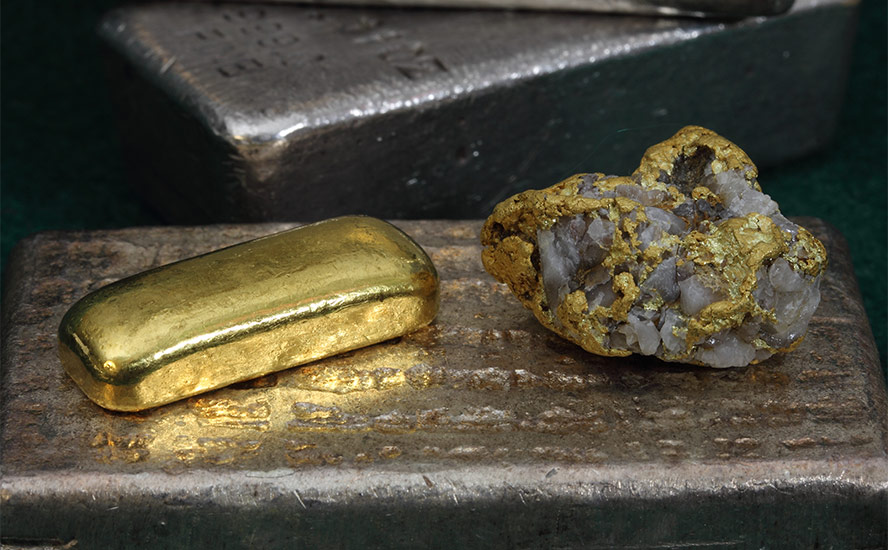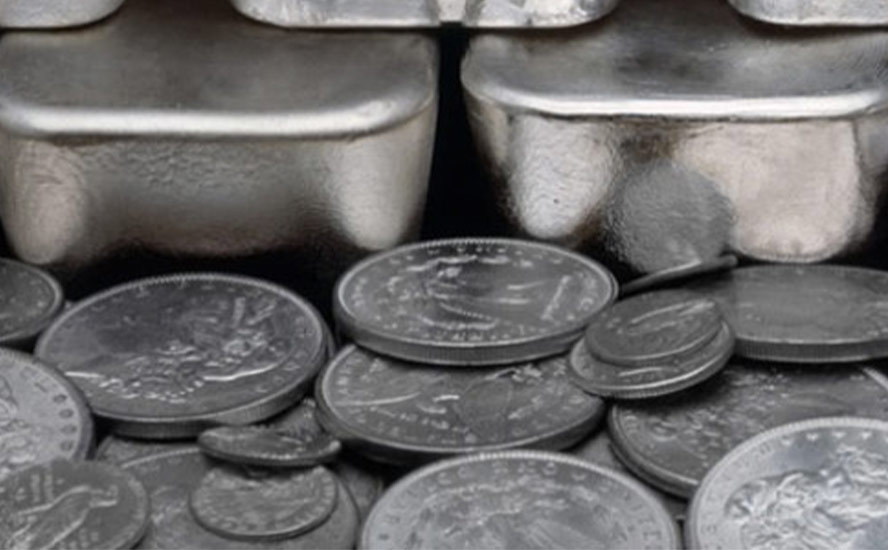Pampa Metals zoning in on copper-gold porphyry at Cerro Buenos Aires, Chile
2021.12.09
For years, Chile has been ideal “elephant” copper deposit hunting ground for the big-name mining companies. Boasting the largest copper reserves worldwide, at 200 million tonnes, Chile’s dominance isn’t waning anytime soon.
Around 80% of its copper production comes from copper-gold porphyry deposits, with most situated in the northern desert areas. These porphyries, which are also rich in molybdenum with silver by-products, provide ore for some of the world’s most prolific copper mines.
Porphyry deposits are usually low-grade but large and bulk-mineable, making them attractive targets for mineral explorers. Since 1970 over 95% of US copper production has come from porphyry deposits, and more than 60% of world annual copper production.
Northern Chile has some of the largest copper and gold deposits in the world, formed from a combination of factors, but generally associated with intrusive-extrusive magmatism and tectonic activity on the western boundary of the South American plate.
Several metallogenic belts developed, reflecting changes in the tectonic setting and igneous activity. These include the Miocene High Cordillera Belt, the Mid-Terciary Domeyko Cordillera Belt, the Paleocene Central Belt, the Mesozoic Coastal Belt and the Overlap Paleocene and Domeyko Belt.
Naturally, given northern Chile’s copper riches, some of the mining industry’s largest red-metal producers have flocked to the region. Chilean state-owned Codelco operates El Teniente, the world’s largest underground copper mine, along with Chuquicamata, the second deepest copper mine on Earth and one of the largest open-pit mines.
Other major copper miners, who have undertaken significant exploration and production, include BHP, Freeport McMoran, Rio Tinto and Antofagasta Minerals. The latter has four operating mines in Chile including its flagship Los Pelambres in the Coquimbo region.
Escondida, owned by BHP, Rio Tinto and a Japanese consortium headed by Mitsubishi, is the largest copper mine by capacity at 1.4Mtpa (and the largest producer of copper cathodes and concentrates). Collahuasi, another top Chilean copper mine, is jointly owned by Anglo American, Glencore and Mitsui.
Still, many areas along the copper-rich mineral belts of northern Chile remain underexplored, offering growth opportunities to those holding competitive greenfield land positions in this premier copper-producing region.
In recent years, there has also been an influx of mid-tier and junior mining companies looking for the next big copper discovery in northern Chile.
One of the most promising landholders is Pampa Metals (CSE:PM) (FSE:FIRA), which controls 100% interest in eight exploration projects that are prospective for copper and gold. These projects cover a total area of 62,000 hectares.
The company’s projects (Arrieros, Block 2, Redondo-Veronica, Block 3, Block 4, Cerro Buenos Aires, Cerro Blanco and Morros Blancos) are all located along the proven mineral belts of the Atacama region, including the Central Paleocene and Domeyko, that have dominated the world’s copper production.

As shown on the map above, five are situated along the mid-Tertiary porphyry copper belt of northern Chile — the Domeyko Cordillera — that is host to three of the world’s top five copper mining districts: Collahuasi, Chuquicamata and Escondida.
The remaining three projects are located in the heart of the Paleocene mineral belt, which hosts a series of important copper porphyry deposits and mines such as Cerro Colorado (BHP), Spence (BHP), Sierra Gorda (KGHM & Sumitomo) and Relincho (part of Nueva Union – Teck-Goldcorp).
The Chilean Atacama Desert is characterized by mountain ranges separated by relatively flat, piedmont-gravel-filled “pampas” that conceal the underlying geology.
These areas remain underexplored because they contain a layer of gravel, 30-50m thick, that was deposited after the formation of the porphyries. A rough estimate suggests at least 50% of northern Chile is covered by pampas, meaning that half of the region’s undiscovered mineral deposits may be concealed by a thick gravel cap.
Notwithstanding the important discoveries noted above, there are still very large areas of untested pampas in northern Chile that have the potential to conceal significant mineral deposits.
Outcrops in the pampas are rare, however if found, they can display similar characteristics, in terms of geology and hydrological alteration, as copper porphyry deposits. Pampa Metals’ game plan is to first conduct surveys to find the outcrops, and then sample and drill them.
Redondo-Veronica and Cerro Buenos Aires are the focus of a 4,000-meter reverse circulation (RC) drill program that began in June. (RC drilling is different from diamond drilling in that it uses compressed air to produce small rock chips at the bottom of the hole which get flushed up to surface for sampling, versus diamond drilling where a diamond drill bit pierces the rock and produces drill core for assaying)
Surface signatures at both projects have turned up evidence of a potential copper porphyry system at depth. If more drilling can verify this theory, it would instantly pop Pampa Metals’ stock price and trigger a flurry of interest from potential acquirers, given Pampa’s proximity to some of the world’s largest copper mines and deposits.
Cerro Buenos Aires
Cerro Buenos Aires is located approximately 130 km southeast of the port city of Antofagasta, covering 7,600 hectares. Like Cerro Blanco, it is in a similar geological setting to, and approximately 200 km south-southwest of, the Spence and Sierra Gorda copper mines, and along trend from both the El Peñon and Guanaco gold-silver mines.
This year, drilling at Cerro Buenos Aires focused on the Cerro Chiquitin area to the north, which is representative of a porphyry-type level of exposure.
In mid-September Pampa Metals announced the completion of nine RC holes totaling 2,738 meters.
This week Pampa published assay results confirming its earlier interpretation of a porphyry-related hydrothermal system:
All holes drilled around the small Cerro Chiquitin outcrop, in the northern third of the Cerro Buenos Aires project area, have returned a variety of anomalous precious metals and multi-element intersections, indicative of a fertile porphyry-type hydrothermal system in the vicinity, Pampa states in the Dec. 7 news release.
The holes drilled in the immediate vicinity of the outcrop and those to the south and southwest returned gold and silver intercepts and significant anomalies in copper up to 0.07%, molybdenum (0.01%), zinc (0.06%) and lead (0.05%).
The three holes with the most anomalous geochemistry intersected multiple minerals including gold, silver, copper, molybdenum, zinc, lead, arsenic and antimony, suggesting the inner periphery of a fertile hydrothermal system, with the target copper-rich core likely at depth.
The highlight intercept was 14 meters at 0.18 grams per tonne gold including a higher-grade core assaying 6m @ 0.22 g/t Au. Although drill holes to the north appear less mineralized, they are consistent with the propylitic exterior of a porphyry system, Pampa said. Drill holes to the south are on the inner periphery of the system but appear to be transitioning to propylitic alteration further to the southwest and west.
Could the outcrop at Cerro Buenos Aires be the tip of the iceberg of a large porphyry underneath? According to Pampa, the results so far are encouraging:
Geological and geochemical results to date from wide-spaced drilling at Cerro Buenos Aires have clearly vectored towards a fertile porphyry-type hydrothermal system to the south and southeast of the Cerro Chiquitín tourmaline breccia. The 9 holes drilled to date extend over a north-south oriented prospective corridor some 4.5 km x 1 km, largely obscured by 40m to 80m of post-mineral gravel cover, and results have narrowed the target area to a 1 km x 1 km core area of interest. In view of this, additional follow-up work comprising detailed induced polarisation (IP) profiles and deeper diamond drilling is currently being planned for the area.
Pampa also notes, The porphyry system may be cored by copper-gold/gold-copper mineralisation, but also shows evidence of having potential for peripheral precious metals-rich veins.
As for next steps, Pampa Metals is planning about 20 line-kilometers of pole-dipole IP surveying in the gravel-covered pampa to the south and southeast of Cerro Chiquitin, likely starting in January. The pole-dipole array is used when the surveyor needs to see deep within a cross-section of the Earth.
Following the IP survey, Pampa is also planning two to three diamond drill holes, drilled to a depth of 750 meters, to further explore evidence of a highly mineralized porphyritic intrusion.

Map of Cerro Buenos Aires showing recent and historical drill hole locations.
2021 exploration
For Pampa Metals, this year’s exploration focus was to advance four of the properties under its portfolio, with the company relying on third-party expenditures on two other projects.
Details of its latest technical update are summarized below:
- Cerro Buenos Aires: Drilling continued vectoring towards a large and well-developed copper-gold porphyry-related alteration and mineralization system, covered by post-mineral gravels, where follow-up deeper diamond drilling is planned.
- Redondo-Veronica: Drilling has indicated deep porphyry potential with vectors derived from hydrothermal alteration and geochemical anomalies found in relevant drill holes, together with geophysical anomalies. Follow-up deeper diamond drilling is being contemplated.
- Block 4: Fieldwork has revealed the coincidence of a discrete magnetic high with a dacite porphyry intrusion exhibiting an intense quartz-veinlet stockwork zone. Further fieldwork, including trenching due to limited outcrops, is planned to help define drill targets.
- Block 3: Fieldwork has revealed multiple magnetic features of potential interest in post-mineral covered areas, and geological mapping around the periphery of the covered areas has confirmed the prospective nature of the area. Further geophysical surveying is being planned to help define possible drill targets.
- Third-party expenditures: Pampa Metals’ partner, Austral Gold Ltd., has commenced fieldwork at the Morros Blancos project and has recently announced positive preliminary results for a gold target. A second optioned project, Cerro Blanco, is also being advanced by Austral.
All the above-mentioned drilling and fieldwork was completed less than a year into the company’s inception, demonstrating the experience and proficiency of the exploration team.
Its relatively shallow drill-testing of four target areas at the Cerro Buenos Aires and Redondo-Veronica projects has already given the company a clear line of sight towards at least two, and possibly three, deep copper porphyry targets.
Extensive geophysical campaigns, including drone-flown and ground-based magnetic surveys, have complemented detailed geological mapping in the field by a copper porphyry expert on five properties.
The recent discovery of a potentially important zone of quartz veinlet stockworking at the Block 4 project brings further encouraging news on the company’s copper exploration quest.
Conclusion
AT AOTH we are impressed by what Pampa Metals has accomplished in such a short period of time and we look forward to what is shaping up to be an exciting flow of news as the company advances its northern Chile copper-gold projects into the new year.
Pampa Metals Corp.
CSE:PM, FSE:FIRA
Cdn$0.35, 2021.12.07
Shares Outstanding 43.4m
Market cap Cdn$16.2m
PM website
Richard (Rick) Mills
aheadoftheherd.com
subscribe to my free newsletter
Legal Notice / Disclaimer
Ahead of the Herd newsletter, aheadoftheherd.com, hereafter known as AOTH.
Please read the entire Disclaimer carefully before you use this website or read the newsletter. If you do not agree to all the AOTH/Richard Mills Disclaimer, do not access/read this website/newsletter/article, or any of its pages. By reading/using this AOTH/Richard Mills website/newsletter/article, and whether you actually read this Disclaimer, you are deemed to have accepted it.
Any AOTH/Richard Mills document is not, and should not be, construed as an offer to sell or the solicitation of an offer to purchase or subscribe for any investment.
AOTH/Richard Mills has based this document on information obtained from sources he believes to be reliable, but which has not been independently verified.
AOTH/Richard Mills makes no guarantee, representation or warranty and accepts no responsibility or liability as to its accuracy or completeness.
Expressions of opinion are those of AOTH/Richard Mills only and are subject to change without notice.
AOTH/Richard Mills assumes no warranty, liability or guarantee for the current relevance, correctness or completeness of any information provided within this Report and will not be held liable for the consequence of reliance upon any opinion or statement contained herein or any omission.
Furthermore, AOTH/Richard Mills assumes no liability for any direct or indirect loss or damage for lost profit, which you may incur as a result of the use and existence of the information provided within this AOTH/Richard Mills Report.
You agree that by reading AOTH/Richard Mills articles, you are acting at your OWN RISK. In no event should AOTH/Richard Mills liable for any direct or indirect trading losses caused by any information contained in AOTH/Richard Mills articles. Information in AOTH/Richard Mills articles is not an offer to sell or a solicitation of an offer to buy any security. AOTH/Richard Mills is not suggesting the transacting of any financial instruments.
Our publications are not a recommendation to buy or sell a security – no information posted on this site is to be considered investment advice or a recommendation to do anything involving finance or money aside from performing your own due diligence and consulting with your personal registered broker/financial advisor.
AOTH/Richard Mills recommends that before investing in any securities, you consult with a professional financial planner or advisor, and that you should conduct a complete and independent investigation before investing in any security after prudent consideration of all pertinent risks. Ahead of the Herd is not a registered broker, dealer, analyst, or advisor. We hold no investment licenses and may not sell, offer to sell, or offer to buy any security.
Richard does not own shares of Pampa Metals Corp. (CSE:PM). PM is a paid advertiser on his site aheadoftheherd.com
Legal Notice / Disclaimer
Ahead of the Herd newsletter, aheadoftheherd.com, hereafter known as AOTH.Please read the entire Disclaimer carefully before you use this website or read the newsletter. If you do not agree to all the AOTH/Richard Mills Disclaimer, do not access/read this website/newsletter/article, or any of its pages. By reading/using this AOTH/Richard Mills website/newsletter/article, and whether you actually read this Disclaimer, you are deemed to have accepted it.


























